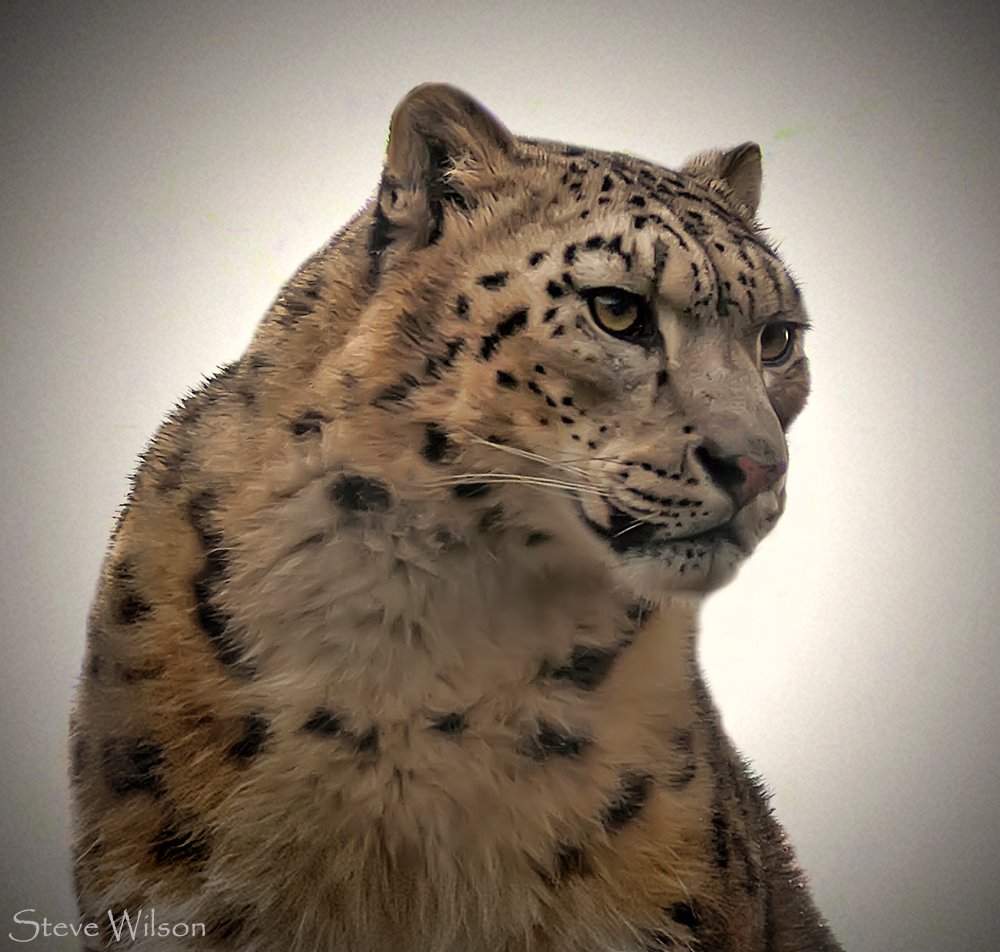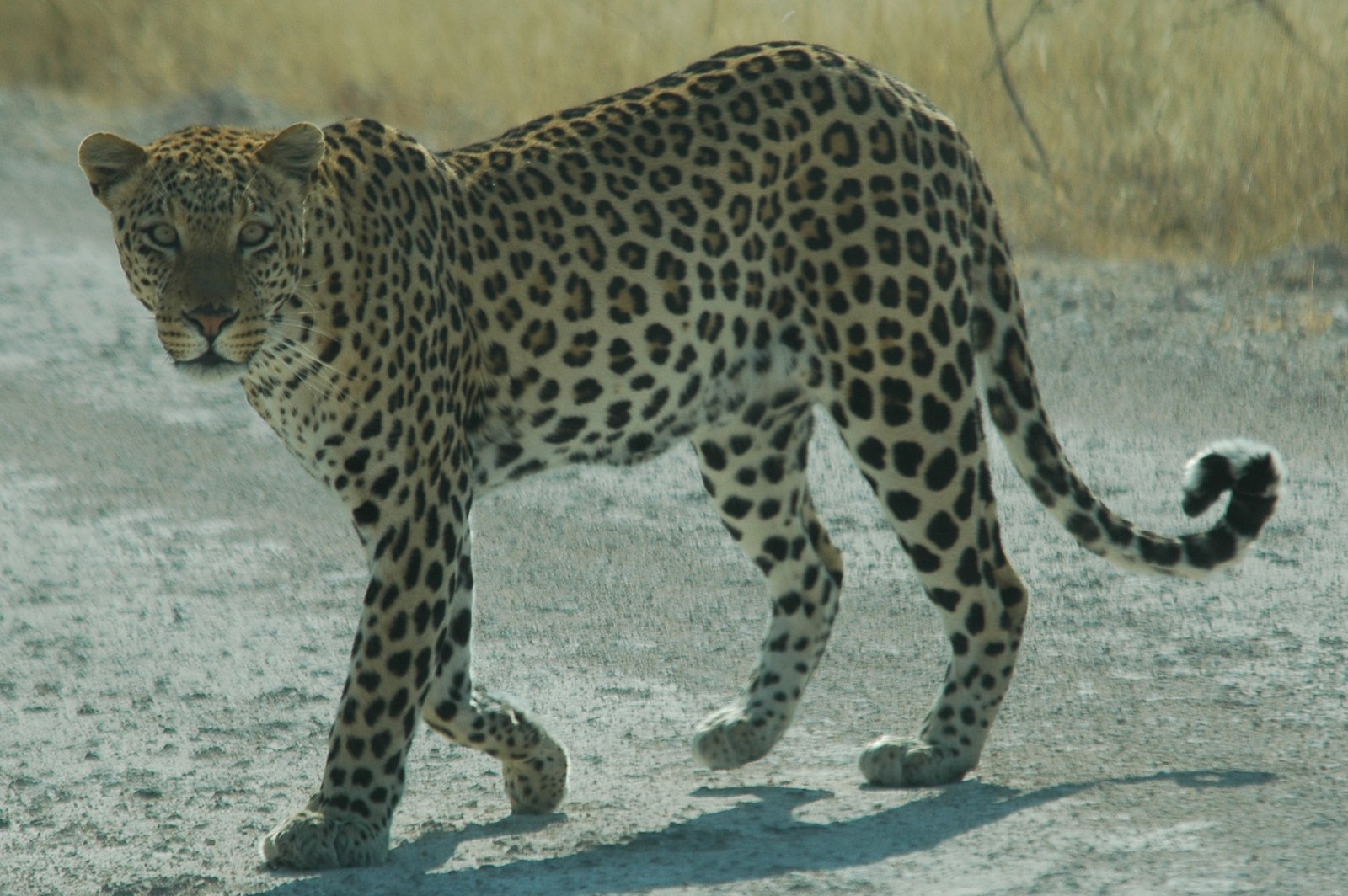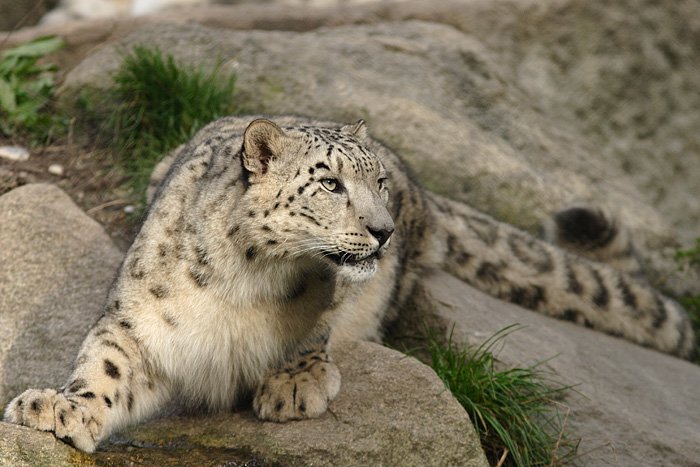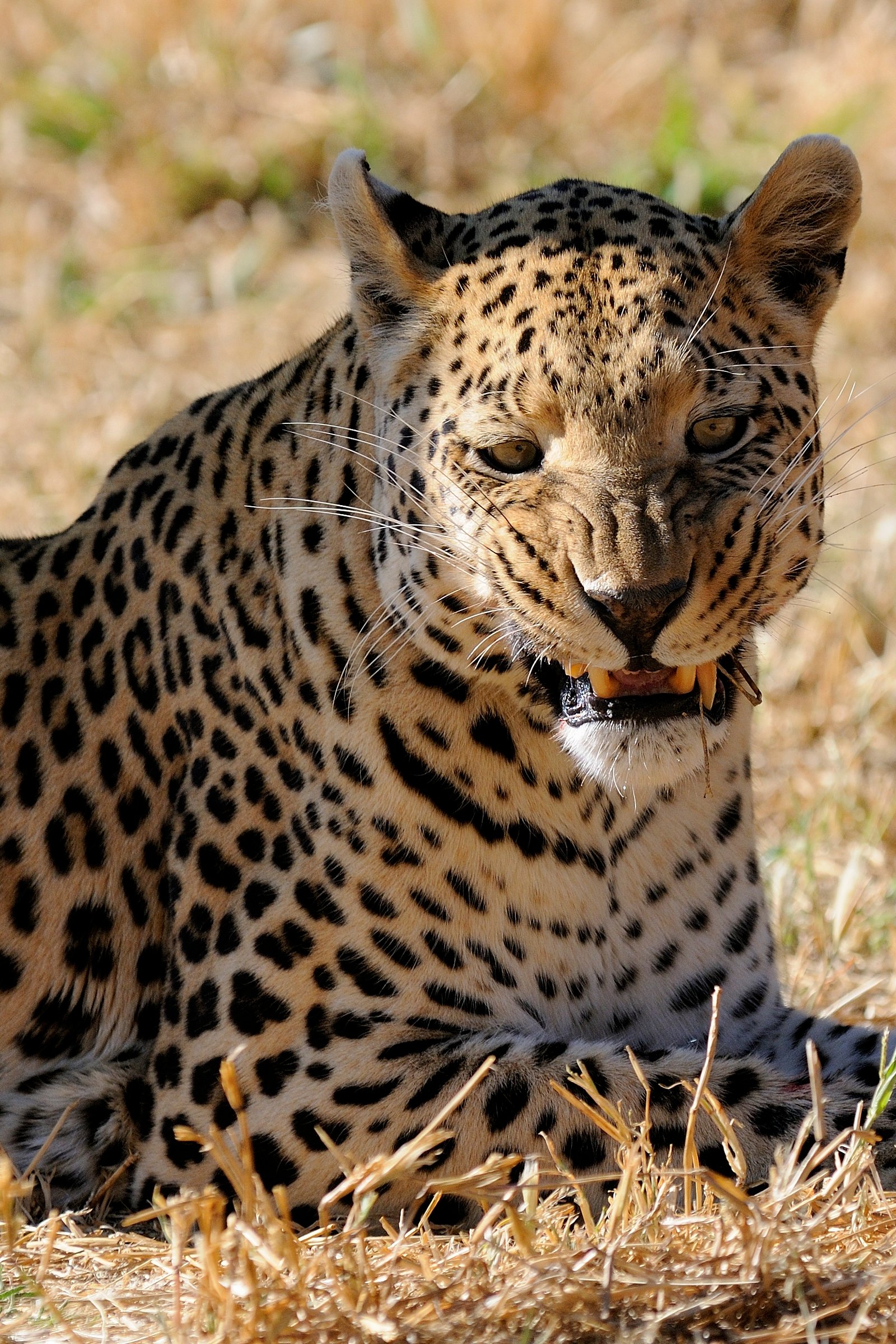It’s hard not to be spellbound by the elusive beauty of a leopard. Picture one—golden rosettes melting into tall Namibian grass, every muscle rippling with quiet power. Yet, behind this wild elegance is a truth that aches: Namibia’s leopards are slipping away, and not just at the steady pace scientists once predicted. Their disappearance is happening faster, stealthier, and with consequences rippling across ecosystems and hearts alike. What’s truly behind their vanishing act? Let’s wander into the world of these mysterious cats and uncover the secrets, struggles, and startling wonders that make Namibia’s leopards both unforgettable and heartbreakingly at risk.
The Ghosts of the Savannah

Leopards have always been called “ghost cats” for good reason. They’re masters at melting into shadows, rarely seen even by those who live close to them. In Namibia, this ability to vanish has long helped leopards escape danger—but now it’s haunting conservationists. The more invisible they become, the harder it is to track their numbers or protect them. Poaching, habitat loss, and conflicts with farmers hide behind their vanishing act, making it easy to ignore just how quickly the population is shrinking. The mystery that once protected them now works against their survival. For those who cherish wildness, every gap in the grass feels a little emptier, a little lonelier, when we realize that the ghosts are fading fast.
Rosettes in the Rising Sun

There’s something mesmerizing about a leopard’s coat—golden fur dappled with perfect, inky rosettes. In the soft Namibian dawn, these patterns catch the sun, transforming the animal into a moving work of art. But these stunning coats have also put a target on the leopard’s back. Trophy hunters and illegal traders covet their unique look, making leopards more vulnerable than ever. Each vanished cat means fewer rosettes gracing the savannah, fewer reminders of nature’s creativity. The loss is more than visual; it’s a blow to the country’s natural heritage. The beauty that once dazzled explorers now fuels a quiet crisis, to the heartbreak of anyone who’s ever glimpsed that wild elegance in the morning light.
The Solitary Survivors

Unlike lions or cheetahs, leopards are solitary by nature. Each one carves out a personal kingdom, patrolling vast territories alone. This independence is both their strength and their weakness. In Namibia, shrinking habitats and human expansion have forced leopards into ever smaller patches, leading to more clashes with people and fewer safe spaces to roam. Solitude makes them harder to find and protect—they simply slip away when trouble comes. When a solitary cat disappears, there’s no pride or pack left behind to carry on. Each loss echoes in silence, reminding us how fragile these independent spirits really are.
Farmers and Feline Fears

Namibian farms stretch for miles, their cattle and sheep dotting open landscapes that used to belong to leopards. It’s no surprise that tension flares when wild cats and livestock meet. Many farmers view leopards as threats to their livelihoods, and too often, these majestic animals pay the ultimate price. Retaliatory killings, sometimes legal and sometimes not, are a leading cause behind the leopards’ rapid disappearance. It’s a bitter irony—the land that once nourished them now works against them. Yet, the story isn’t all conflict; some farmers are beginning to see the value of leopards as pest controllers or as part of a thriving ecosystem. Change is slow, but hope flickers where understanding grows.
Prey on the Decline

Leopards rely on a wide menu—from agile antelope to unsuspecting birds—but Namibia’s prey populations are shrinking too. As bushmeat hunting and livestock expansion take their toll, leopards are left with fewer choices, forcing them closer to human settlements. When wild prey grows scarce, leopards become bolder, risking everything for a meal. This desperation makes them more visible, but also more vulnerable to traps, poison, or the barrel of a gun. The delicate balance of predator and prey is unraveling, and with it, the security of the leopards who once ruled these wild spaces with quiet confidence.
Waterholes and Whispered Warnings

In Namibia’s arid heart, waterholes are lifelines. Here, leopards and other wildlife gather—sometimes in uneasy silence, sometimes in a fleeting truce. But as droughts worsen and waterholes dry up, competition intensifies. Leopards, already secretive, now face more direct confrontations with rivals, humans, and livestock. Shrinking water resources mean more risks and more reasons to venture beyond traditional territories. Conservationists watch nervously, knowing that each parched season squeezes the population a little tighter. These waterholes echo with the warnings of a changing climate and the desperate adaptability of the cats who haunt their edges.
The Lure and Loss of Trophy Hunting

Trophy hunting remains a heated topic in Namibia. Proponents argue it brings in needed revenue for conservation, but for leopards, the story is rarely that simple. The loss of even a few adult cats—especially dominant males—can disrupt territories and breeding for years. While regulations exist, illegal hunts and loopholes mean not every leopard is accounted for. The thrill of the hunt, for some, means a lifetime of loss for these big cats. Every mounted head or spotted pelt represents not just a trophy, but the vanishing of a unique, irreplaceable life from Namibia’s wild tapestry.
Unseen Poachers, Unseen Deaths

Poaching is a shadowy threat, hard to quantify and harder to stop. Leopards, being naturally elusive, often fall victim to snares and poison set for other animals. Their skins and bones fetch high prices on the black market, while their deaths frequently go unreported. In remote regions, a single poacher can erase generations of leopards without anyone noticing. The tragedy is doubled by the secrecy: without clear records, conservationists struggle to grasp the true scale of the loss. Behind every confiscated skin is a story of survival cut short, a chapter closed before it could be read.
Children of the Night

Leopards are creatures of darkness, stalking their world long after sunset. Their night vision is legendary, their steps so silent they seem to float through the shadows. Yet, the cover of night is no longer safe. Human encroachment—roads, fences, and flashlights—reach even the most hidden corners. Nighttime, once a cloak of protection, now holds new dangers. Cars strike wandering cats, and armed patrols disrupt their quiet hunts. The night is shrinking for Namibia’s leopards, and with it, the sense of mystery that defines them.
A Mother’s Fierce Love

There’s a raw tenderness in the way a leopard mother tends to her cubs—hiding them in rocky dens, teaching them to stalk, defending them against all odds. Namibia’s shrinking wild lands make this task perilous. Cubs face threats from predators, starvation, and the ever-present dangers brought by humans. When a mother falls, her cubs are unlikely to survive. This cycle makes every loss more devastating; it’s not just one life, but a potential legacy erased. The devotion of a leopard mother is fierce and touching, a reminder of the fragile threads that connect generations in the wild.
Tracks in the Dust

Sometimes, all that’s left of a leopard is a set of footprints—delicate, round, pressed into the red Namibian earth. For trackers, these prints are clues, small triumphs in the search for a vanishing species. Each paw mark is a story: a midnight hunt, a mother returning to her den, a young cat testing its boundaries. Yet, as leopards disappear, so do these fleeting traces. The landscape feels emptier when the dust settles and no fresh tracks appear. Each print is a fragile hope, a sign that somewhere out there, wildness still survives—if only just.
Silent Keepers of Balance

Leopards play an invisible but crucial role in Namibia’s ecosystems. As apex predators, they control prey populations, prevent overgrazing, and help maintain the delicate balance of plant and animal life. Their absence is felt in ways most people never see—rodent booms, overbrowsed vegetation, and the slow unraveling of natural order. Protecting leopards means protecting the health of the entire savannah. Their power is quiet, their influence woven through every blade of grass and ripple of fur. When they vanish, the balance tips, and the land itself begins to change in ways that are hard to reverse.
Mysteries in the Mountains

Namibia’s mountains hold secrets—hidden caves, echoing canyons, and, sometimes, the elusive shadows of leopards. These rugged landscapes offer refuge, but also isolation. Leopards here live on the edge, adapting to steep cliffs and scarce water. Their mountain homes are harder for humans to reach, but not impossible. Mining, tourism, and expanding settlements creep ever higher, fragmenting what was once wild and free. For the leopards that remain, each mountain is both sanctuary and trap, a place to hide and a place from which they cannot escape the wider threats facing their species.
Changing Climates, Changing Lives

Namibia is no stranger to climate extremes—droughts scorch the land, and sudden rains transform it overnight. For leopards, these swings mean constant adaptation. Drought drives prey away, forces leopards to roam farther, and brings them into more frequent conflict with people. Heat and thirst test their endurance, while unpredictable seasons make survival a daily gamble. As global warming intensifies, these challenges will only grow. The resilience of Namibia’s leopards is awe-inspiring, but even the toughest cats have their limits. Each year, the world they know shifts beneath their paws, demanding more than ever just to survive.
Tourism: Blessing or Burden?

Wildlife tourism is a double-edged sword for Namibia’s leopards. On one hand, tourists bring attention and funding that can support conservation. On the other, increased human presence can disturb delicate behaviors, disrupt breeding, and even attract poachers. When managed well, tourism helps people see the value of protecting leopards. When mismanaged, it pushes these shy animals deeper into hiding or conflict. The difference comes down to respect—for the wildness of the cats, for the needs of the land, and for the stories that only leopards can tell. Namibia’s challenge is to keep the scales tipped in favor of survival, not spectacle.
The Power of a Name

In some Namibian communities, leopards are more than just animals—they’re symbols, spirits, and legends. Stories passed down through generations shape how people see these big cats. A leopard might be a protector, a trickster, or an omen of change. This cultural weight can help or hinder conservation. Where leopards are respected, they’re more likely to be protected. Where they’re feared or misunderstood, conflict grows. The power of a name is real; it can open doors to cooperation or close them forever. Honoring these stories may be as important as any fence or law when it comes to saving Namibia’s leopards.
Technology Tracks the Wild

Modern conservationists are turning to technology to help leopards. Camera traps, GPS collars, and drones reveal where these elusive cats roam, hunt, and hide. This data is gold—helping scientists understand movement patterns, population sizes, and threats. But technology has limits; it can’t replace local knowledge or the wisdom held by those who live closest to the land. The best results come when tech and tradition join forces, creating a fuller picture of what leopards need to thrive. Every ping from a GPS collar, every silent camera click, is another piece of the puzzle in the fight to save these wild souls.
Community Champions

Some of the most powerful defenders of Namibia’s leopards are local communities. Villagers, farmers, and guides who live alongside these cats every day are finding new ways to coexist. They set up “predator-proof” enclosures, use guard dogs, and teach children about the value of wildlife. These grassroots efforts are humble but effective. When communities benefit from leopards—through tourism, education, or pride in their natural heritage—they become champions for survival. Change doesn’t always come from the top; sometimes, it grows from the ground up, one neighbor, one story, one saved leopard at a time.
Hope in the Young

Children are the beating heart of Namibia’s conservation future. When kids learn about leopards—through school programs, wildlife clubs, or simply watching the bush—they grow up valuing what once seemed expendable. Stories of fierce mothers and daring hunts spark imaginations and empathy. With every new generation comes a chance to shift attitudes, reduce conflict, and build a culture of protection. The future of leopards isn’t just in laws or science—it’s in the hands of young Namibians who see these cats not as threats, but as treasures. Hope is a wild thing, and it often starts small.
Fences That Divide

Fences stretch across Namibia’s plains, marking farm boundaries and protected areas. For leopards, these barriers are more than just obstacles—they’re life-or-death challenges. A fence can mean the difference between reaching water or not, finding prey or hunger. Sometimes, leopards get trapped or injured trying to cross, and their natural migration routes are cut off. While fences can help protect livestock, they often come at the cost of wildlife freedom. Balancing the needs of people and predators is no easy task, but finding creative solutions—like wildlife corridors—offers a glimmer of hope for the open spaces leopards need.
Laws on Paper, Challenges on the Ground

Namibia has wildlife laws meant to protect leopards, but enforcement is tough. Vast landscapes, limited resources, and competing interests mean poachers and illegal hunters often slip through the cracks. Authorities do their best, but paperwork alone can’t stop a bullet or heal a poisoned cat. Real change comes when laws are paired with education, community involvement, and real consequences for breaking the rules. The path forward is uneven—full of setbacks and slow progress. Still, every rescued leopard, every prosecution, is a small step toward a future where these remarkable cats can thrive.
Echoes of Extinction

When a species like the leopard starts to vanish, the effects ripple outward. Other animals shift their behavior, landscapes change, and communities lose part of their identity. The silence left behind is more than just the absence of a roar or a paw print—it’s the loss of wonder, of wildness, of the possibility that some things remain untamed. In Namibia, the echoes of extinction are growing louder, urging us to act before it’s too late. The choice isn’t just about saving leopards; it’s about preserving the magic that makes the world worth exploring, worth fighting for, worth loving.
Unbreakable Spirits

Leopards are survivors, shaped by millions of years of adaptation and cunning. They’ve weathered droughts, evaded hunters, and outlasted rivals. Their resilience is legendary, their spirit almost unbreakable. Yet, even the toughest animal has limits. The pressures of the modern world—loss of land, prey, and safety—are testing leopards like never before. Still, every sighting, every saved cub, every act of kindness from a farmer or conservationist is proof that hope remains. The spirit of Namibia’s leopards is a lesson for us all: never give up, even when the odds seem insurmountable.
Conclusion

Namibia’s leopards are more than just spots in the grass—they’re stories of wonder, resilience, and quiet beauty. Their struggle to survive speaks to the challenges facing all wild things in a changing world. As we marvel at their strength, we’re reminded of our own role in shaping the future. Protecting leopards isn’t just about saving a species; it’s about honoring the wildness within and around us. Their fate rests in our hands, hearts, and choices. Will we answer the call to keep their spirit alive? Or will we let their echo fade into silence?

Suhail Ahmed is a passionate digital professional and nature enthusiast with over 8 years of experience in content strategy, SEO, web development, and digital operations. Alongside his freelance journey, Suhail actively contributes to nature and wildlife platforms like Feline Fam, where he channels his curiosity for the Feline into engaging, educational storytelling.
With a strong background in managing digital ecosystems — from ecommerce stores and WordPress websites to social media and automation — Suhail merges technical precision with creative insight. His content reflects a rare balance: SEO-friendly yet deeply human, data-informed yet emotionally resonant.
Driven by a love for discovery and storytelling, Suhail believes in using digital platforms to amplify causes that matter — especially those protecting Earth’s biodiversity and inspiring sustainable living. Whether he’s managing online projects or crafting wildlife content, his goal remains the same: to inform, inspire, and leave a positive digital footprint.






